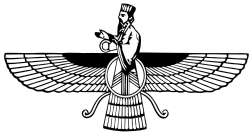| Part of a series on |
| Zoroastrianism |
|---|
 |
| |
Zoroastrianism was a prominent religious belief in Afghanistan for centuries. [1] Until half a century ago, 2,000 Zoroastrians were living in Afghanistan. [2] For a long period of time Bactria was a center of Zoroastrianism, [3] and Zoroaster is said to have taught in the city, perhaps in the 15th century BCE. [4] Arachosia (modern Kandahar) was considered the second fatherland of Zoroastrianism. [5] Additionally, Balkh is also known as one of the birthplaces of Nowruz. [6] [7]